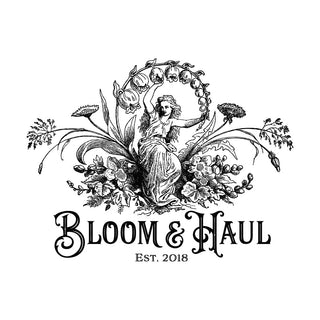Everything About Wildflowers
Wildflowers are the epitome of natural beauty. Their free-spirited, wild nature makes them perfect for any garden or outdoor space. They come in a variety of colors, shapes, and sizes, and their ability to self-seed and spread effortlessly adds an element of surprise and wonder to any garden.
So, if you're looking to add some natural charm to your garden, here's everything you need to know about wildflowers.
What are wildflowers?
Wildflowers are simply flowers that grow in the wild, without human intervention. They're found in meadows, fields, forests, and even along the roadside. Some of the most popular wildflowers include poppies, daisies, sunflowers, and lavender. They're known for their resilience, hardiness, and ability to grow in a range of environments.
Why are wildflowers so popular?
Wildflowers are popular for many reasons. Firstly, they're low-maintenance and require very little attention or care. They can grow in a range of soils, including poor and rocky soil, and they're resistant to drought and other extreme weather conditions.
Secondly, wildflowers are incredibly versatile. They can be used in a range of ways, from creating a colorful wildflower meadow to adding a natural charm to your flower arrangements. Wildflower bouquets are especially popular, as they capture the essence of nature and add a touch of rustic charm to any home or event.
How to grow wildflowers?
Growing wildflowers is relatively easy, and it doesn't require much expertise. Here's a step-by-step guide to growing wildflowers in your garden:
Step 1: Choose the right location - Wildflowers thrive in sunny areas, so choose a spot that gets plenty of sunlight.
Step 2: Prepare the soil - Wildflowers can grow in a range of soils, but they prefer well-draining soil. Add compost or organic matter to improve the soil quality.
Step 3: Choose the right seeds - Choose a mix of wildflower seeds that are native to your region. This will ensure that they're adapted to the local climate and soil conditions.
Step 4: Sow the seeds - Scatter the seeds on the soil surface and lightly rake them in. Water the soil well.
Step 5: Maintenance - Water the seeds regularly until they've established themselves. After that, wildflowers require little maintenance, other than occasional weeding and deadheading.
Wildflower Bouquets
One of the most popular uses of wildflowers is in bouquets. Wildflower bouquets are perfect for adding a touch of natural beauty to your home or event. They're also ideal for those who prefer a rustic, natural look over the traditional, formal floral arrangements.
When creating a wildflower bouquet, it's important to keep a few things in mind:
-
Choose a variety of wildflowers - Mix and match different wildflowers to create a vibrant and colorful bouquet.
-
Don't be afraid to add greenery - Wildflowers look great when paired with natural foliage and greenery.
-
Keep it simple - Wildflower bouquets are best kept simple and rustic. Avoid overdoing it with too many flowers or complicated arrangements.
At Bloom & Haul, we offer a range of wildflowers and other natural elements to create stunning, one-of-a-kind bouquets. Whether you're looking for something simple and rustic or more elaborate and formal, we've got you covered.
Conclusion
In conclusion, wildflowers are the perfect way to add a touch of natural beauty to your garden or home. They're low-maintenance, versatile, and incredibly resilient, making them ideal for anyone





